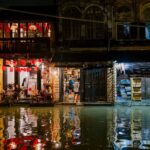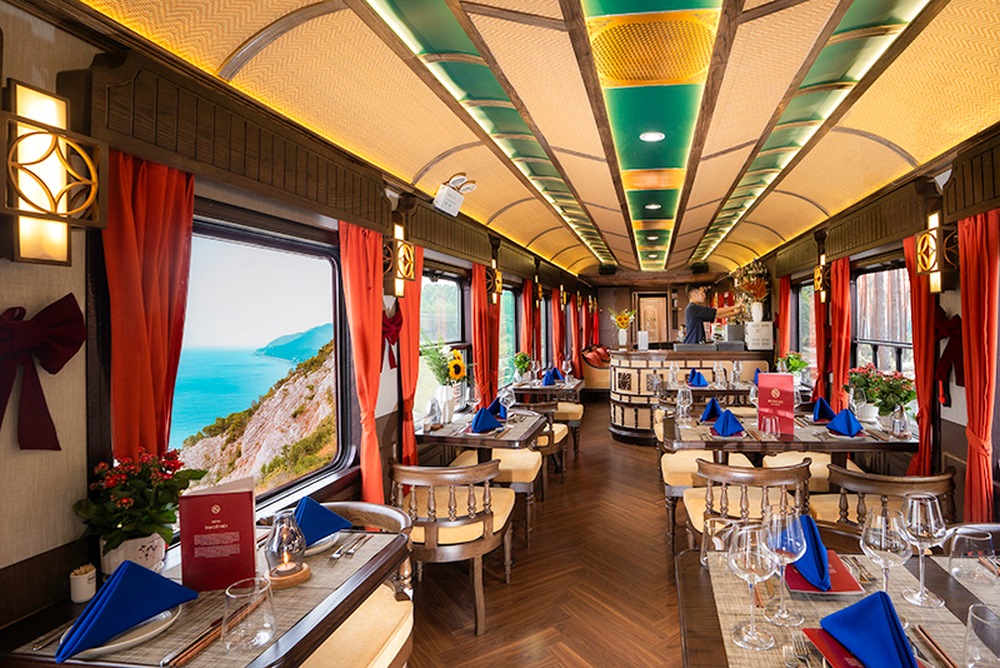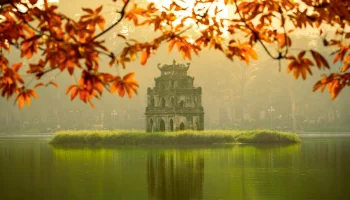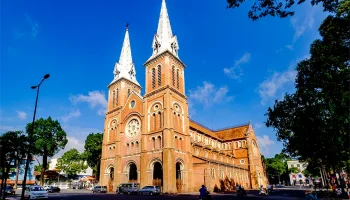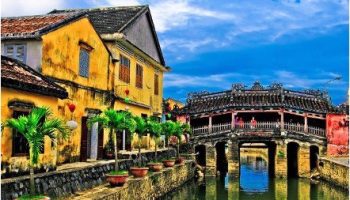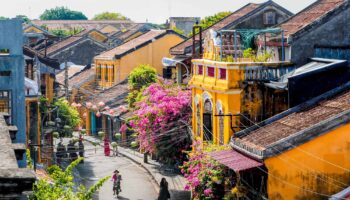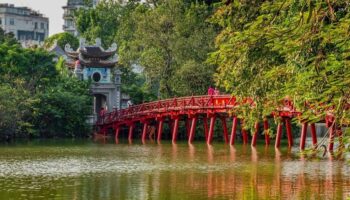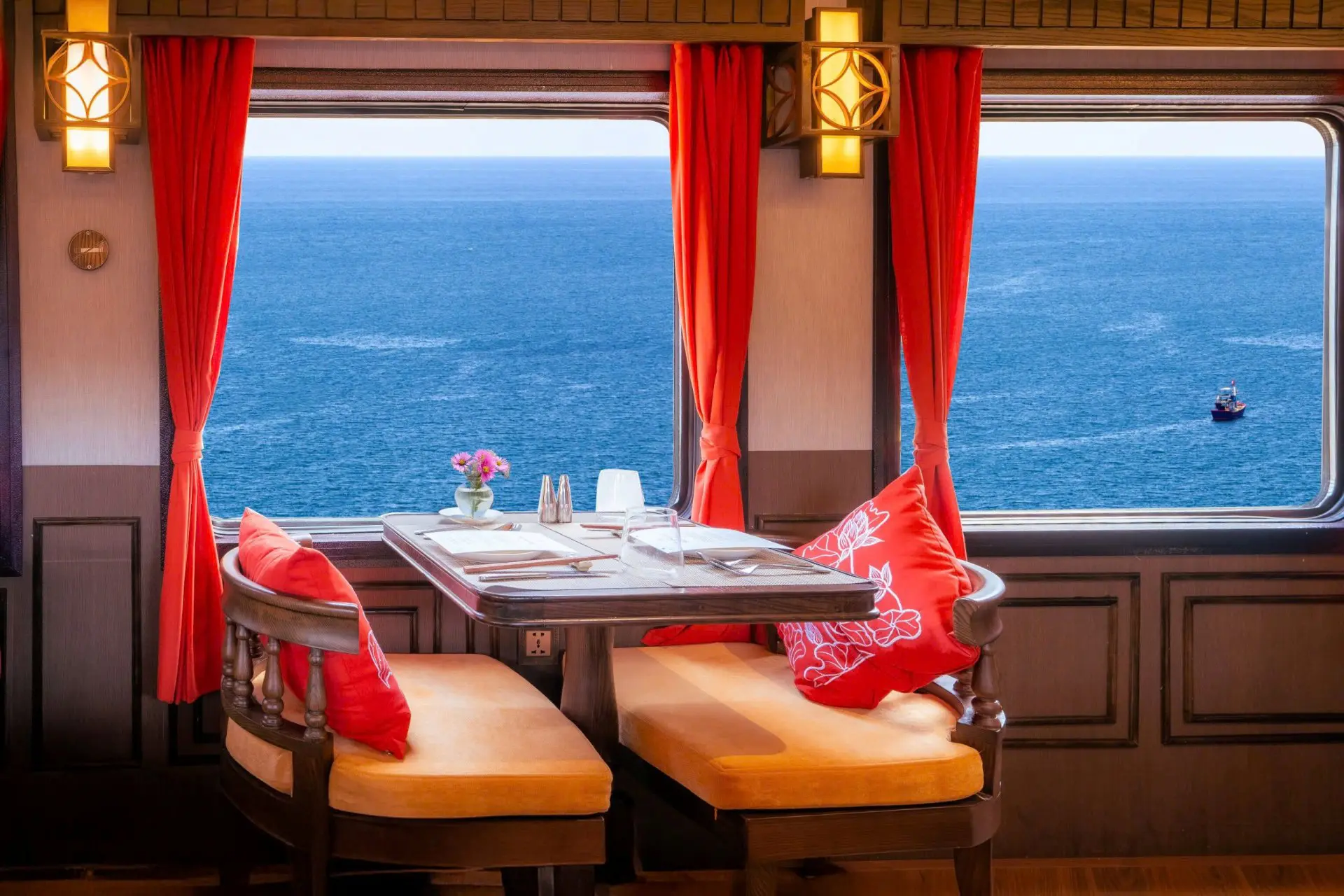
The Ultimate Luxury Train Journey Across Vietnam
SJourney Train, comprising the first luxury train journey across Vietnam, sets a new standard of travel. Encompassing the elegant stretch of Vietnam, the journey offers more than just vistas; it offers an experience. One observes pristine landscapes through the private cabin window, indulges in the artistry of regional cuisine, and breathes in a lifestyle of depth, quietude, and understated elegance.’
Table of Contents
Toggle
1. A Poetic Prelude in Hanoi
The journey commences with an afternoon sun shower over Hanoi’s serene lakes and green-tree-lined alleys. A private transfer will take you from your hotel to the VIP lounge for a soothing welcome before boarding the historic train.

Dinner with an introduction is served in the luxurious dining carriage, with food, music, and chatter to follow. As the train quietly drifts out of Hanoi, the bright lights slowly turn into dark countryside serenity, where your first peaceful night in a luxurious private cabin beckons.
2. Through the Heritage Trail: Ninh Binh – Quang Binh – Hue – Hoi An
Ninh Binh embraces you with the greatness of Trang An and Hoa Lu. Bike through quiet villages and old homes for a slow ride back to the real soul of Vietnam in authentic day-to-day life.
It is Quang Binh that fills you with the inner beauty of Phong Nha-Ke Bang, a primordial tourist site where nature whispers in caves and rivers, where simplicity becomes the highest form of luxury—dining beside a stream and sensing pure life.
With a former royal capital now turned into memory and sound, Hue turns a new page. Hop onto a vintage Vespa to visit citadels, gardens, and royal tombs. In Ben Xuan, there will be an evening avoiding blending into the culture, a rendezvous with dining and palace harmony with poetry.

And with its antique stone lanes and gold-painted walls, Hoi An beckons you to traverse centuries of trade and tradition. Beyond the calm visage lie culturally vibrant artisan villages, ancient houses, and the Japanese Covered Bridge where East meets West in harmonious elegance.
3. From Sea to Sand: Nha Trang – Phan Thiet
Nha Trang will offer great tranquility on Emperor Cruise. Drift across limestone islands and coastal villages, and enjoy fresh seafood with a seaside breeze, accompanied by a cup of afternoon tea.
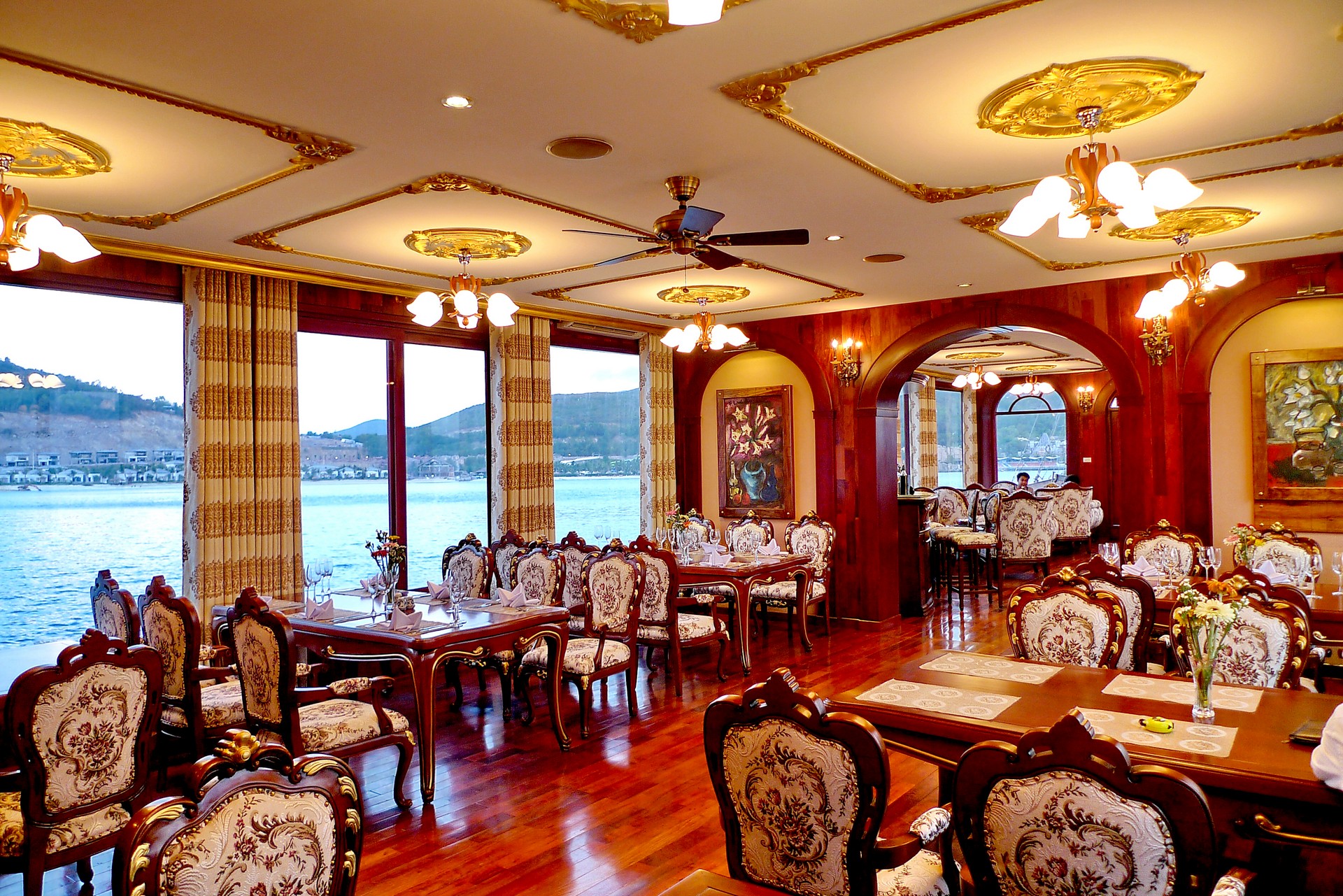
Phan Thiet closes the journey quite beautifully. Visit Ta Cu Mountain, explore the Fish Sauce Museum, walk along the white sand dunes, and find yourself dining beside the ancient Cham tower – a worthy tribute to a mighty civilization which once ruled the place.
4. Cultural Values that Define the SJourney Experience
SJourney may mean transiting through landscapes but, from the absolute point of the term, it is a call to enter Vietnam’s rich and multi-layered cultural identity: Every stop in the journey is just like another chapter in a magnum opus that tells of tradition, religion and artistry.
4.1. Historical Heritage and Dynastic Legacy
Above and beyond a tour of ancient capitals, SJourney initiates an emotional dialogue between travelers and Vietnam’s evergreen cultural spirit. This is not a journey to behold a few sights; it is about feeling the pulse of a nation as it lives through rituals, philosophies, and values held from one generation to another.
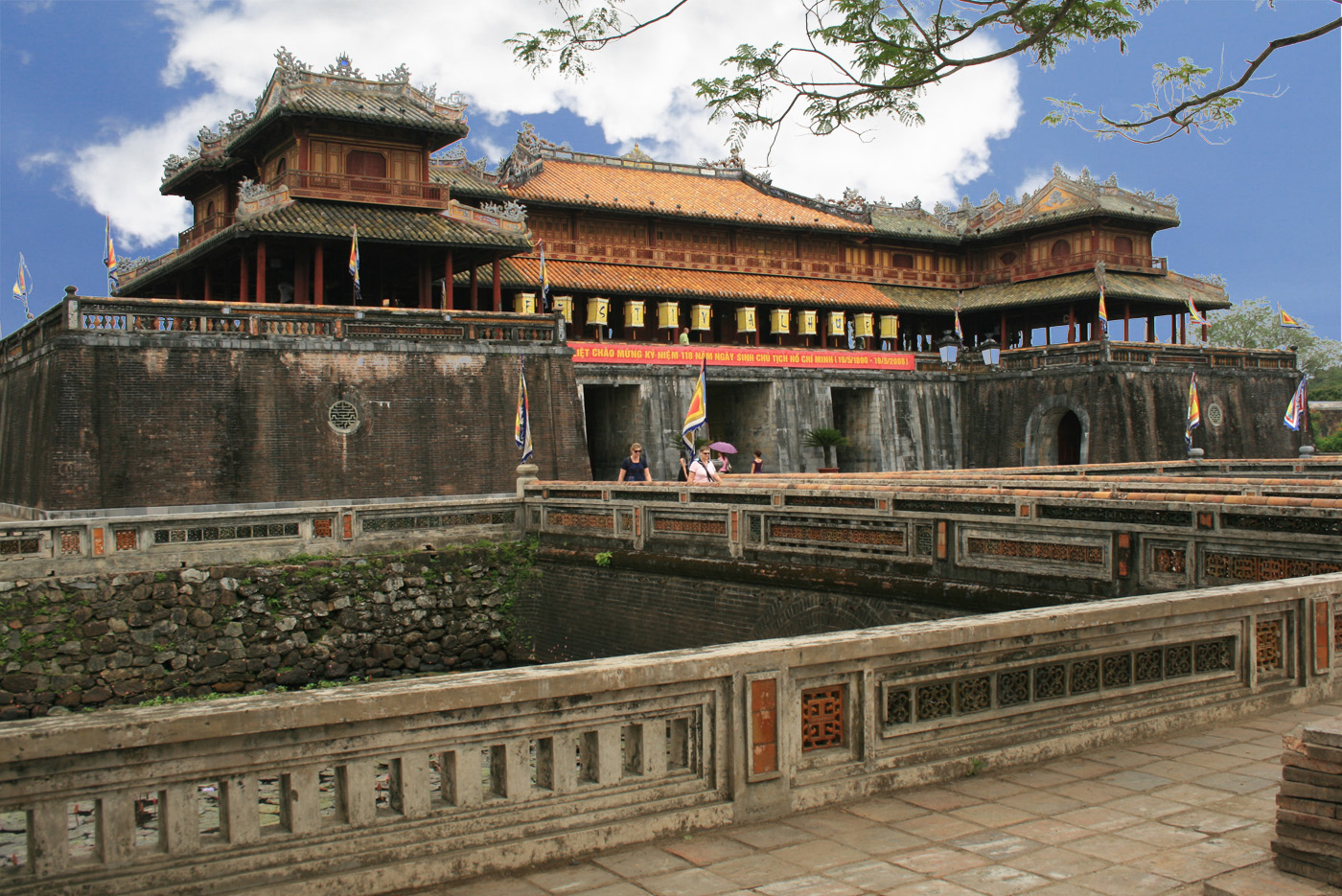
Experiencing the dynastic heritages of Vietnam means entering places that are held, even today, in quiet reverence by the local population. Thus, the remnants of history soon become indelibly etched in the minds of travelers as they walk where emperors walked. Therefore, people tour not merely imperial palaces and temples; they ponder how the legacies have shaped today’s Vietnam’s grace, humility, and pride.
Whether that means rites of ancestor worship, poetic moderation in Confucian values, or royal etiquette still imbued in Hue’s culture, that becomes a guide through which visitors see that traditional culture for them is not merely a relic but a present-day stewardship. The true cultural experience lies not in stone and structure but in those moments of connection: small gestures of reverence, stories shared over tea, or the quiet dignity with which heritage is kept alive without razzmatazz.
This is how SJourney transmutes heritage into a living, breathing presence: not just seen, but deeply felt by those who travel with open hearts.
4.2. Traditional Craft Villages – Living Museums
Every artisan village visited by SJourney is not a dot on the itinerary, it’s a gateway to Vietnam’s living heritage. And in these very spaces, the local intangible traditions are not preserved in glass cases but are rehearsed by skilled craftsmen and women who literally embody the spirit of generations gone by.
The art of making paper flowers has been preserved for the last three centuries at Thanh Tien Village, located near Hue. Each flower is more than decoration, it is a sacred offering with a role in spiritual rituals surrounding the seasons of life and death. Watching artisans transform colored paper sheets into petals with such convincing artistry is to watch veneration evolve into art.
Over the river from Hoi An, Cam Kim Island is alive with the rhythmic carving of wood, boat building, and weaving of bamboo baskets. These arts are integral to the life of the community, reverberating with the legacy of traditions. An observer or an outsider is not welcomed into the humble pride of generations of craftsmanship.
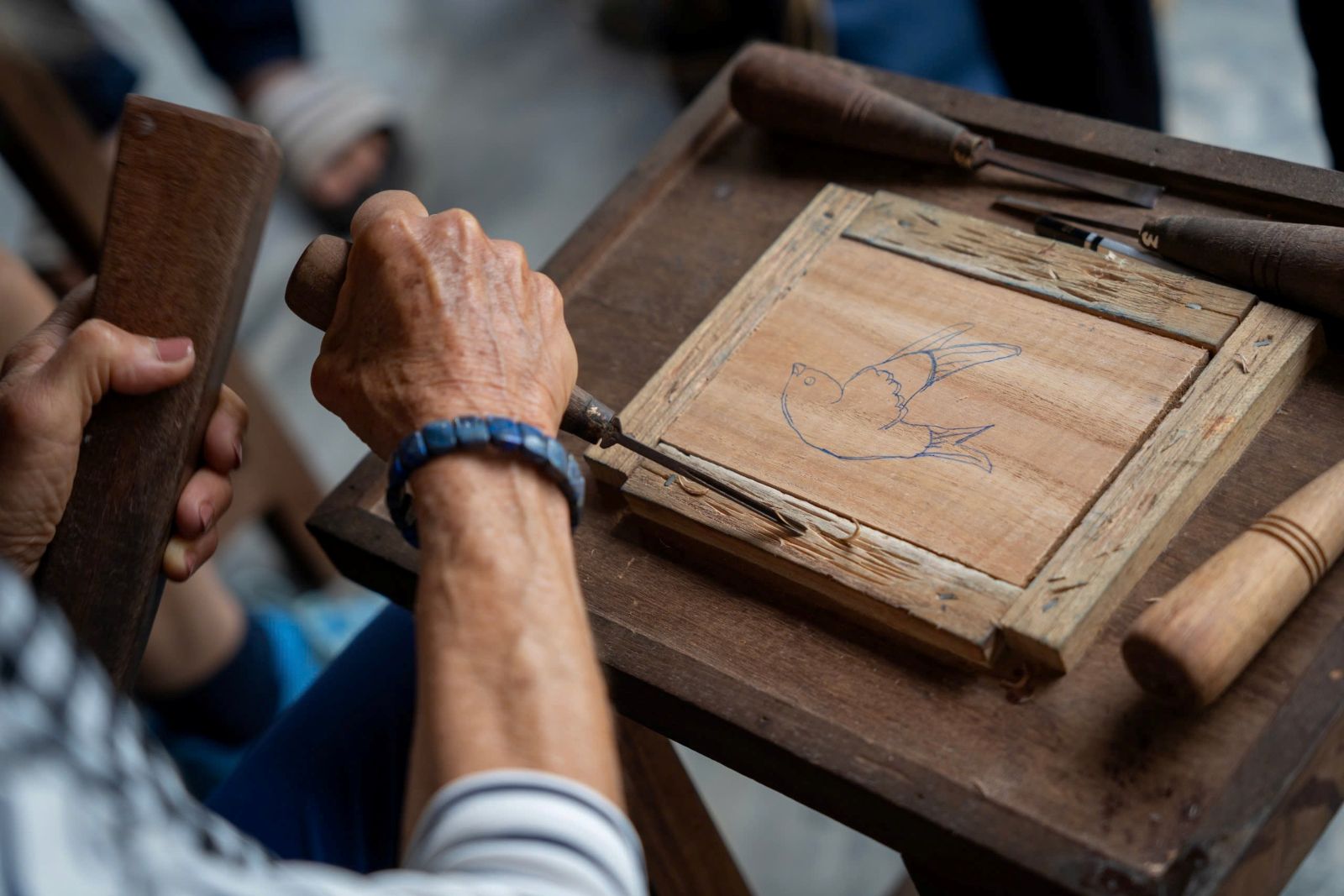
Phan Thiet is where the vigorous odyssey of Vietnamese cuisine unveils itself in the insipidly, yes, pungent, and convoluted flavors of traditional fish sauce. At the Fish Sauce Village, guests experience not just a taste, but the coastal culture, family trade secrets, and culinary love into which it is intertwined. With the smell of salty air and deep umami aroma, one really begins to understand why fish sauce is referred to as the soul of Vietnamese cooking.
4.3. East–West Harmony in Architecture and Spirit
To delve into the essence of SJourney, one must go beyond the surface appearances and delve into the harmony of thought, belief, and aesthetics that constitutes the cultural of Vietnam. This harmony finds its own peculiar outlet in Hoi An, where centuries of cultural exchange have molded not just the appearance of the town but also the very soul of it.

As the people wander through the old quarters of Hoi An, they are confronted not just by structures influenced by Japanese, Chinese, and Vietnamese traditions, but by the spirit of respect and integration. Architecture quietly narrates stories; each timber beam, each roof, and the very configuration of courtyards echo a melding of philosophical systems, values, and worldviews once articulated and exchanged through trade and kinship.
More than a result of the coexistence of two separate streams of culture, this confluence of two distinct worlds stands for Vietnam’s openness and quiet assurance in preserving its own identity while embracing the other. In SJourney, we are not only asking travelers to observe; we want them to actively engage by sharing tea with craftsmen, participating in ancient rituals, or even just absorbing the delicate symmetry of a city that has settled in harmony.
4.4. Music and the Living Arts
The Ben Xuan Garden House is not a concert hall. It is a cultural sanctuary where the spirit of Vietnam’s imperial arts breathes and flourishes. What SJourney presents here is beyond performance; it is a class apart—an immersion into purity, one which once adorned courtly life.
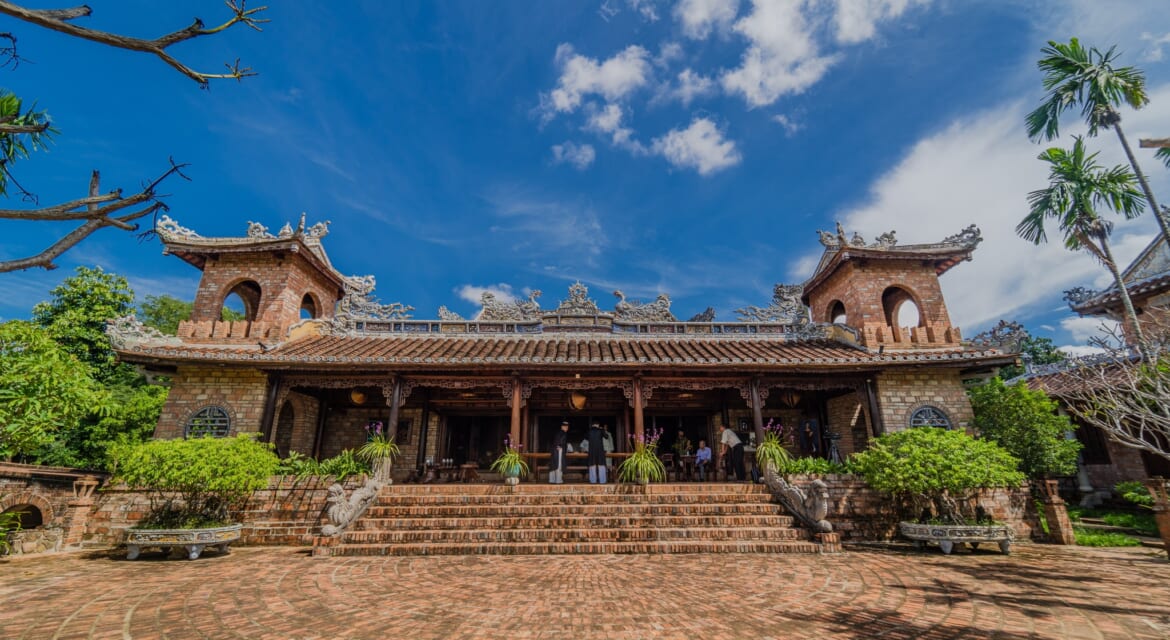
With the first notes of traditional music ceasing to be mere sound and asserting themselves deep in the subconscious, the world is left behind and time rekindled. Precisely chosen melodies, hand-crafted instruments, a setting quietly solemn: every gesture, every slow pour of tea, every swerve of the eye against the heritage of architecture, speaks unto nature-the grace of Vietnamese eternity.
Here, music binds. It speaks of kings and poets, love and grievance. In this space, the travelers not only observe; they become part of a cultural language of grace, precision, and poetic sensibility that defines the very essence of SJourney.
Ben Xuan Garden House is not a concert. It is an immersive experience of Vietnam’s imperial arts. The intersection of music, architecture, and food is one of refinement and timelessness in its celebration of culture.
5. When Travel Becomes a Living Work of Art
SJourney is not for those in a hurry. It is designed for those who appreciate depth, quiet elegance, and lasting meaning. Each stop is a movement in a grand composition, and each encounter, a note in a song of discovery.
When the journey ends, you don’t just return with photographs – you carry with you a deeply personal portrait of Vietnam: diverse, dignified, and rich with spirit.



